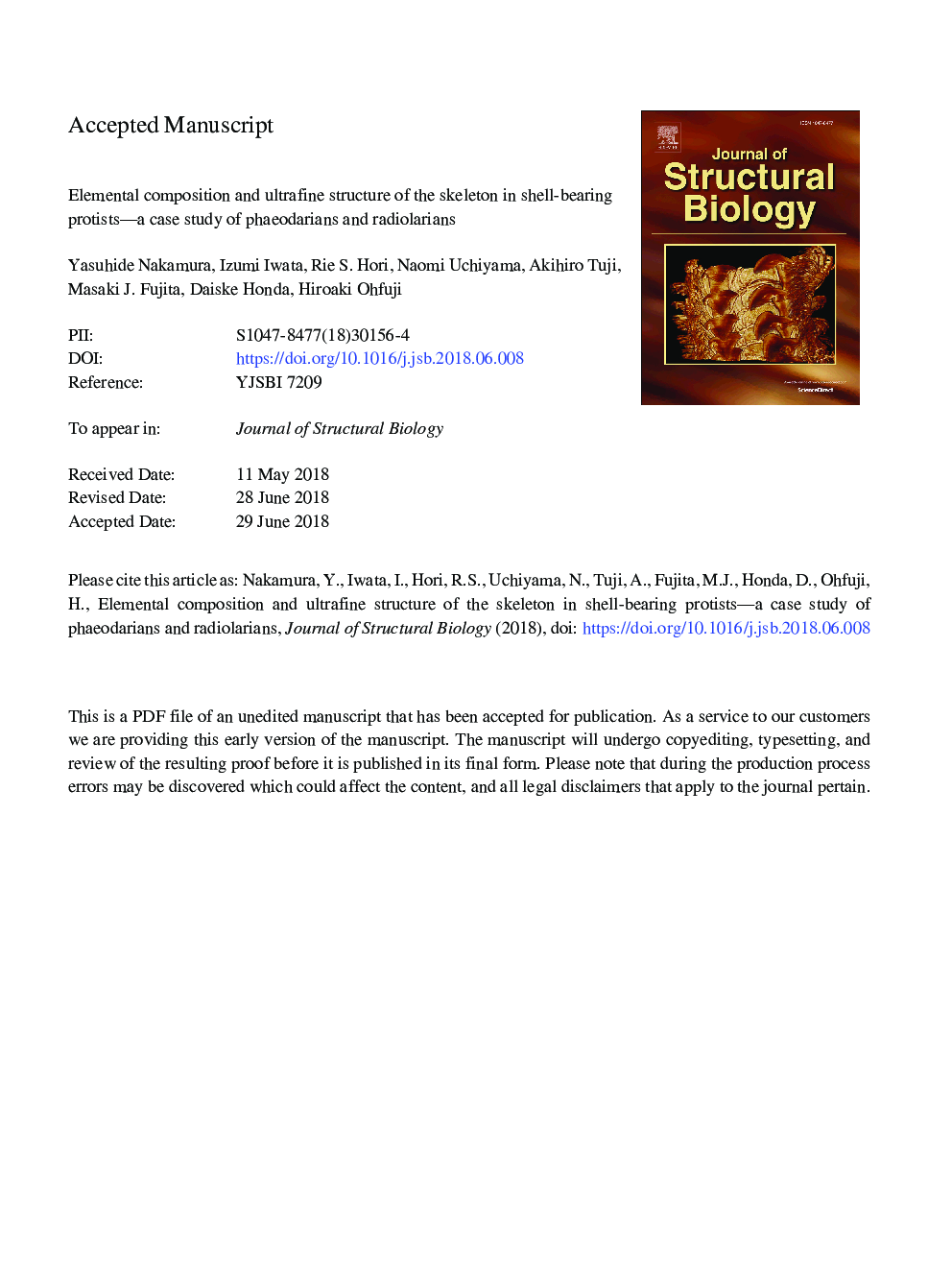| کد مقاله | کد نشریه | سال انتشار | مقاله انگلیسی | نسخه تمام متن |
|---|---|---|---|---|
| 8956919 | 1646182 | 2018 | 19 صفحه PDF | دانلود رایگان |
عنوان انگلیسی مقاله ISI
Elemental composition and ultrafine structure of the skeleton in shell-bearing protists-A case study of phaeodarians and radiolarians
ترجمه فارسی عنوان
ترکیب عنصری و ساختار فوق العاده اسکلت در پروتئین های پوسته - مطالعه موردی فئوداری ها و رادیولارها
دانلود مقاله + سفارش ترجمه
دانلود مقاله ISI انگلیسی
رایگان برای ایرانیان
کلمات کلیدی
موضوعات مرتبط
علوم زیستی و بیوفناوری
بیوشیمی، ژنتیک و زیست شناسی مولکولی
زیست شناسی مولکولی
چکیده انگلیسی
Cross-sections were prepared by ultramicrotome (UM) and focused ion beam (FIB) system in order to examine the skeletal structure of ecologically and geologically important shell-bearing protists: phaeodarians and radiolarians. The elemental composition of the skeleton was clarified by the energy dispersive X-ray spectroscopy, suggesting that the skeletons of both groups are mainly made of amorphous silica (SiO2·nH2O) with other minor elements (Na, Mg, Al, Cl, K, Ca and Fe) and that these two groups have similar elemental composition, compared with other siliceous organisms (diatoms and sponges). However, the structural difference among the two groups was confirmed: phaeodarian skeletons are porous, unlike radiolarians with solid skeletons. It was also revealed that the phaeodarian skeleton contains concentric layered structure with spaces, presumably related to the ontogenetic skeleton formation. The distinction in the skeletal ultrafine structure (porous/solid and non-dense/dense) would reflect the ecological difference among the two groups and could be an effective criterion to determine whether microfossils belong to Radiolaria or Phaeodaria. The UM and FIB combined method presented in this study could be a useful approach to examine the chemical and structural characteristics of unculturable and/or rare microorganisms.
ناشر
Database: Elsevier - ScienceDirect (ساینس دایرکت)
Journal: Journal of Structural Biology - Volume 204, Issue 1, October 2018, Pages 45-51
Journal: Journal of Structural Biology - Volume 204, Issue 1, October 2018, Pages 45-51
نویسندگان
Yasuhide Nakamura, Izumi Iwata, Rie S. Hori, Naomi Uchiyama, Akihiro Tuji, Masaki J. Fujita, Daiske Honda, Hiroaki Ohfuji,
